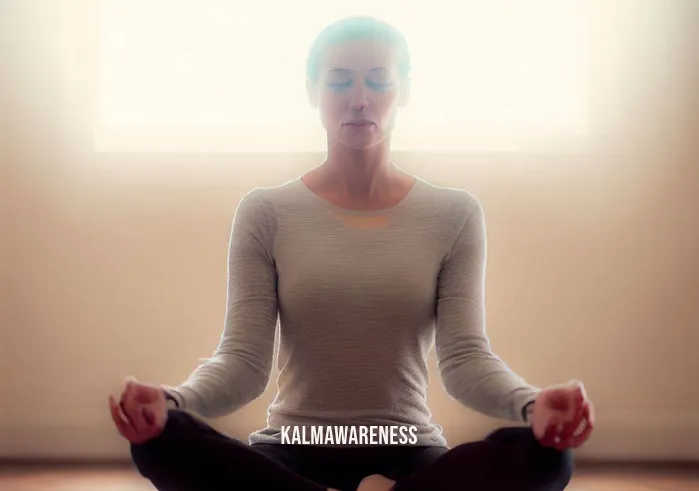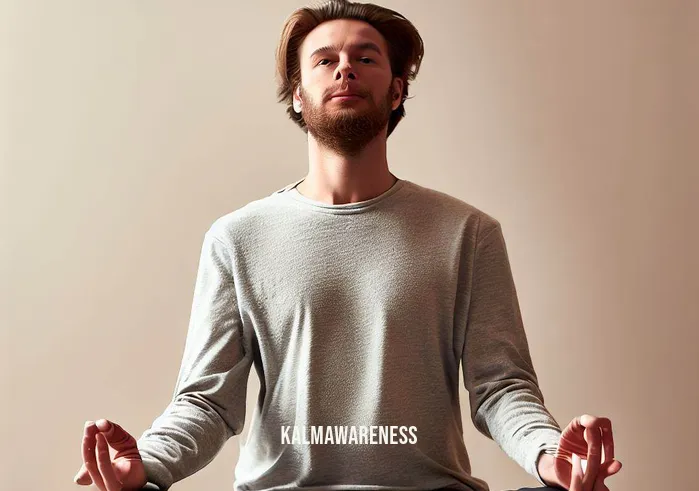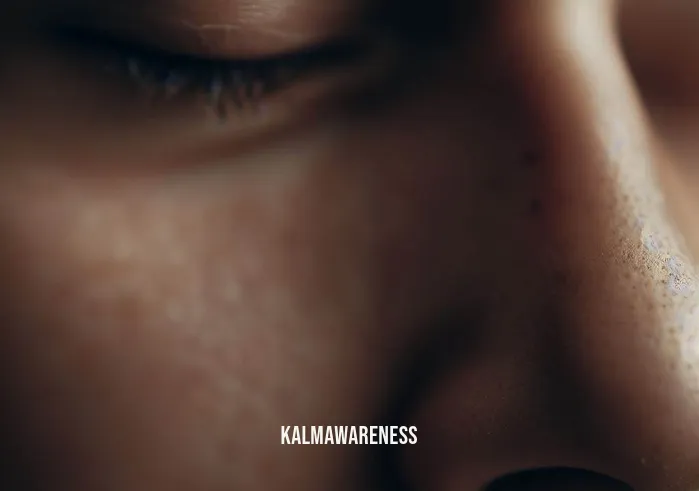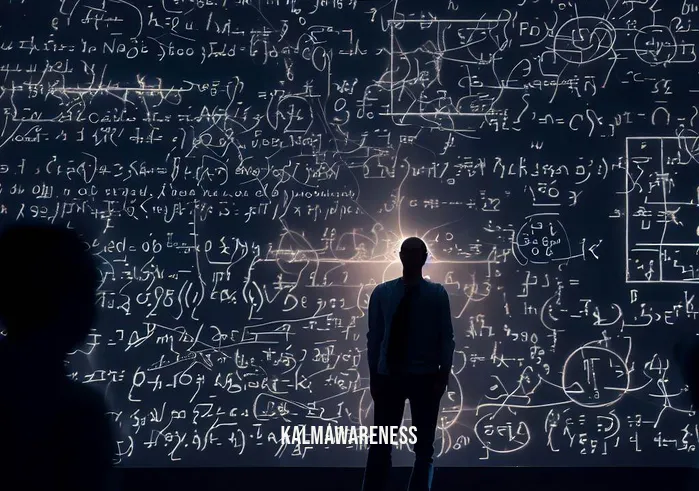The Transformative Power of Meditation for Dizziness: Unearthing the Connection
In today’s bustling world, it’s not uncommon for people to experience a range of physical and emotional imbalances. From stress and anxiety to physical ailments like dizziness, the human body often pays the price for our hectic lives. If you’ve been struggling with issues related to vertigo, balance, or inner ear problems, you may have sought out traditional medical treatments. However, an increasing body of research suggests that complementary therapies like meditation can also provide significant relief. This article aims to delve into the power of meditation for dizziness and how it relates to a broader set of wellness practices.
The Complexity of Dizziness: More Than Meets the Inner Ear
Understanding dizziness requires a multi-faceted approach. While many associate it with problems in the inner ear, a number of factors can contribute to this unsettling experience. Balance issues, for instance, can stem from sensory imbalances, muscular issues, or even psychological factors like stress. Therefore, targeting just the inner ear might not offer a comprehensive solution.
How Does Mindfulness Come Into Play?
Mindfulness practices involve attaining a peaceful state of mind in which thoughts are not occupied by worry. By grounding oneself in the present moment, people with dizziness can learn to shift their focus away from the sensation, thereby reducing its impact.
But how does one actually achieve this state? For many, the answer is a simple yet profoundly transformative practice: meditation. Meditation, particularly mindful movement sleep and EMDR meditation, has shown promise in addressing issues of balance and dizziness. These are not just fancy terms but are anchored in scientific principles that promote relaxation and equanimity.
Breathing and Meditation: The Link We Cannot Ignore
The importance of breathing in meditation is so pivotal that it is often considered an element of some meditation exercises. By learning controlled breathing techniques, you can attain a deeper level of relaxation. This is particularly useful for those suffering from dizziness, as stress and anxiety often exacerbate these symptoms. Jack Kornfield’s meditation for beginners is a good place to start if you’re new to these practices.
What’s more, the frequency of your breathing can even affect your emotional and mental state. This is evident in the 256 Hz benefits that some experts suggest may have a stabilizing effect on how you feel. The idea is simple: when you breathe well, you are more likely to spell stabilize in your overall being, not just in terms of your dizziness.
Looking Ahead
As we journey through the world of wellness, it’s essential to keep in mind the definition of holistic health. It isn’t just about treating symptoms; it’s about treating the person. Meditation for dizziness is not a one-size-fits-all solution. For teenagers, walking meditation might be a more engaging method, as highlighted in teenagers walking. For someone interested in incorporating more physicality into their routine, practices like rouse yoga can be a good fit.
Meditation for dizziness is a burgeoning area of research and practice that offers hope to those who have not found relief through traditional means. And, when combined with other sustainable self-care practices, it provides a robust platform for overall well-being.
If this has piqued your interest, the journey is far from over. In the next segment, we’ll explore more advanced techniques of meditation for dizziness, delve into the role of mindful hypnobirthing for expectant mothers facing balance issues, and discuss how meditation practices are being made simple for everyone to adopt. We will also take a closer look at some guided meditation routines you can easily integrate into your daily life. So, continue reading to unlock the full potential of meditation for achieving balance, both physical and mental.

Advanced Techniques in Meditation for Dizziness: A Comprehensive Guide
Now that we have laid the groundwork for understanding the potential of meditation for dizziness, it’s time to explore some advanced techniques and practices. This chapter aims to deepen your knowledge by providing specific practices, resources, and even a table for easy reference.
The Role of Advanced Techniques
Meditation isn’t a one-size-fits-all approach, especially when it comes to complex issues like dizziness and balance. Touching that body part during specific meditative exercises, for example, can target and alleviate tension in different areas, which in turn may help in reducing dizziness. When we go beyond surface-level practices, we find a rich variety of techniques that offer a range of benefits, all geared towards clearing energy meditation.
Types of Meditation for Dizziness: A List for Better Understanding
To simplify your journey into the world of meditation for dizziness, here is a list that outlines different types of meditation and how they might benefit you:
Mindful Hypnobirthing: Particularly useful for expectant mothers facing balance issues, this practice combines the principles of hypnosis with mindfulness. Learn more about mindful hypnobirthing.
Clearing Energy Meditation: Focuses on cleansing the energy fields, often beneficial in creating a balance within the body.
Judgment of the Wise: A meditation style focusing on discernment and clarity, useful when dizziness stems from mental or emotional stress. Here’s more on judgment of the wise.
Can You Meditate Lying Down?: Yes, and in fact, lying-down meditation can sometimes be a more comfortable position for those experiencing dizziness. Check out methods for meditating while lying down.
One for Each Blessed Day: An approach that involves daily practices aimed at improving specific issues, including dizziness. For more on this, visit one for each blessed day.
Quick Reference Table for Meditation Techniques
| Technique | Primary Benefit | Recommended For |
|---|---|---|
| Mindful Hypnobirthing | Combines hypnosis and mindfulness | Expectant Mothers |
| Clearing Energy Meditation | Balancing internal energy | Everyone |
| Judgment of the Wise | Enhances mental clarity | Those with emotional triggers |
| Can You Meditate Lying Down? | Comfortable positioning | Those with physical restrictions |
| One for Each Blessed Day | Daily targeted practice | Long-term practitioners |
The Importance of Sustainable Self-Care
Just like any other form of care, the effects of meditation are best felt when the practice becomes sustainable. The concept of sustainable self-care isn’t just about immediate relief but about creating a long-lasting change in how you handle stress, balance, and of course, dizziness.
What’s Coming Next
We’ve covered a lot of ground on the types and techniques of meditation for dizziness. However, there are more layers to peel back. In the next chapter, we will delve into the science behind meditation. How do these practices actually affect your brain and body? Are there measurable benefits to this age-old practice? And what do you need to know about how meditation techniques are being made increasingly simpler for everyone to adopt?
If you’re interested in how deep the benefits of meditation can go and how you can harness them, continue reading to explore the physiology and psychology behind this transformative practice.

The Light at the End of the Tunnel: Hope and Inspiration in Meditation for Dizziness
By now, we’ve covered the scientific basis and the variety of techniques that make meditation a compelling option for alleviating dizziness. However, what we haven’t touched upon is the inspiration that can come from embracing such practices. This chapter will walk you through the uplifting stories, quotes, and concepts that shine a light on the potential of meditation for tackling balance issues, vertigo, and more.
Stories of Hope: Real-Life Examples
If you’re looking for motivation to commit to meditation for balance issues, you don’t have to look far. There are numerous testimonials, stories, and even scientific studies that back the benefits of meditation for this issue. Stories of individuals who went from debilitating dizziness to finding a new sense of grounding through meditation are not uncommon. As the saying goes, sometimes you find healing in the most unexpected places. Meditation for dizziness offers not just a remedy but a transformative path, aligning well with the philosophy of meditation made simple.
Uplifting Quotes for Your Journey
“The mind is everything; what you think, you become.” – Buddha
- Meditation trains the mind to focus, redirecting from vertigo to peace.
“In stillness, the world resets.” – Anonymous
- The essence of pretty soon meaning in meditation is that with consistent practice, you’ll find change happening sooner than you think.
“The quieter you become, the more you can hear.” – Ram Dass
- A reminder that even in the battle against physical ailments like dizziness, silence has its own language.
“Each morning we are born again. What we do today matters most.” – Buddha
- Aligns with the idea of taking one step at a time, as we learned in one for each blessed day.
“Health is a state of complete harmony of the body, mind, and spirit.” – B.K.S Iyengar
- When involved in attaining a peaceful state of mind, the body follows, offering respite from dizziness.
Integrating Inspiration into Practice
Drawing inspiration from these quotes and stories is only the first step. The real magic happens when you integrate these principles into your daily life. Just as you might focus on how to get deep so fast in your meditation practice, applying these motivational cues in your routine can help you achieve a deeper, more impactful meditation experience. And the more inspired and committed you are, the more likely you are to see sustainable benefits.
The Invincible Power of Believing
While the physical exercises in meditation are essential, let’s not underestimate the power of faith and belief. A vital component in healing, this concept is supported by what we know as judgment of the wise, where your mental state plays a critical role in your well-being.
What Awaits in the Next Chapter
We’ve explored the techniques, delved into the science, and found inspiration in the world of meditation for dizziness. But how do you sustain this practice long-term? How do you make meditation a part of your daily life?
In the next chapter, we will look at the longevity of meditation for dizziness. We will explore how to build a daily meditation routine, discuss how meditation aligns with other holistic practices, and even provide resources to guide you every step of the way. So, continue reading to discover how to make meditation a lifelong companion in your quest for balance and well-being.

Untangling the Web: A Detailed Guide to Meditation for Dizziness
As we inch closer to mastering the art and science of meditation for dizziness, it’s time to delve deep into the finer aspects that often go unnoticed but can make a significant difference in your practice. In this chapter, we’ll unpack each layer of this intricate yet rewarding form of mindfulness, making sure to guide you through the nuances that might otherwise seem overwhelming.
Key Elements in Meditation for Balance and Inner Harmony
Meditation for dizziness doesn’t exist in a vacuum. It brings together various elements—physical, emotional, and psychological—that contribute to a holistic healing experience. Each component is like a thread in a tapestry, crucial for the overall integrity and effectiveness of the practice. Here’s a breakdown of these elements:
Posture: Whether you choose to meditate lying down or sitting up, posture is pivotal in facilitating effective meditation.
Breathing: The cornerstone of many meditation practices, focusing on your breath can significantly alleviate symptoms of vertigo and imbalance.
Attention: A key element of some meditation exercises, your focus helps you become aware of your body and its sensations, providing a gateway to deeper self-awareness.
Intention: Setting a clear objective is essential. Whether you are looking to keep in mind the definition of your meditation goals or to explore new facets, intention helps steer the practice.
Frequency: Consistency is key, similar to how a teenager might benefit from a regular walking routine as seen in teenagers walking.
Choosing the Right Type of Meditation for Dizziness
The world of meditation is vast, offering a plethora of techniques that cater to different needs and preferences. Choosing the right one for you is akin to selecting a walking style in a sustainable self-care routine. Here are some to consider:
Mindfulness Meditation: Best for those who are looking to be more present.
EMDR Meditation: Incorporating eye movements, this style can be highly effective for people who experience dizziness. Here’s how to get started with EMDR meditation.
Hypnobirthing Techniques: Though traditionally used for childbirth, the mindful hypnobirthing techniques can be adapted for deep relaxation and focus.
Rouse Yoga: An amalgamation of yoga and mindfulness, Rouse Yoga offers a holistic approach to achieving balance.
Sound Healing: Incorporating sounds with specific frequencies like 256 Hz can be a unique yet effective approach.
When Things Get Challenging
Just as in any practice, you’ll encounter hurdles. This is the time to employ:
Recentering Techniques: Realign your focus and attention.
Clearing Energy: Utilize clearing energy meditation to rid any blockages or negative vibes affecting your practice.
A Return to Basics: Simplify your practice by going back to the fundamentals, such as focusing on how to spell stabilize your emotional state through simple meditation.
Looking Forward to the Final Chapter
We have examined the role of meditation for dizziness from various angles, delving into the scientific, inspirational, and now the detailed aspects. Yet, there’s one more crucial area to explore—how to make these practices a sustainable part of your life.
In the next chapter, we will wrap everything up and provide you with a toolkit to help you keep practicing meditation for dizziness long-term. Continue reading to make sure you’re well-equipped to embark on this lifelong journey to balance and well-being.

Full Circle: Completing Our Exploration on Meditation for Dizziness
Congratulations! You’ve made it through an in-depth look at one of the most nuanced yet universally beneficial topics in the realm of mindfulness—meditation for dizziness. As we close this chapter of our journey together, let’s reflect on the profound insights gained and the steps that you can take to make these practices a steadfast part of your daily life.
A Journey Through Varied Terrains
We’ve navigated through the complex terrain of dizziness and imbalance, understanding how meditation serves as a dependable compass. From the initial steps to how we get deep so fast in our meditation routines, we’ve covered all the grounds.
Just like with mindful movement sleep, the key is to practice and stay committed. We delved into various styles like Mindfulness and EMDR, and even integrated elements like sound healing to provide a comprehensive guide.
Beyond Meditation: A Toolkit for Balanced Living
While meditation for dizziness offers a pathway to equilibrium, it’s not the only tool at your disposal. Don’t forget to also look into methods that involve attaining a peaceful state of mind. They say wisdom comes through the judgment of the wise, and part of that wisdom is knowing which tool to use and when.
Where Do We Go from Here?
It’s easy to say, “I’ll start tomorrow,” but the journey of a thousand miles begins with a single step. Take that step today. Even Jack Kornfield, in his Meditation for Beginners, emphasizes the urgency of beginning now. Remember, meditation is made simple, as our guide has shown, and you can always revisit the techniques and advice shared in these pages for clarity.
A Gift That Keeps Giving: Every Blessed Day
There is no end to this voyage; there’s always something new to learn or explore. The joy of meditation lies in this constant discovery, akin to a treasure chest with one for each blessed day.
A Heartfelt Thank You
Before we say our goodbyes, we want to extend our heartfelt thanks for embarking on this eye-opening journey with us. We’re confident that the chapters you’ve read will provide you with valuable insights and methods to achieve inner balance and combat dizziness. We assure you that future editions will continue to deliver insightful, valuable content.
Your Next Steps
In conclusion, it’s your move now. Revisit previous sections if you need to clarify any points or dive deeper into certain topics. For those of you who are excited to continue your exploration into mindfulness and balance, keep an eye out for more insightful articles and guides in our magazine.
Here’s to a dizzy-free, balanced, and mindful life! Until next time, take care.




